Taming Cotton with ‘canine disarming’
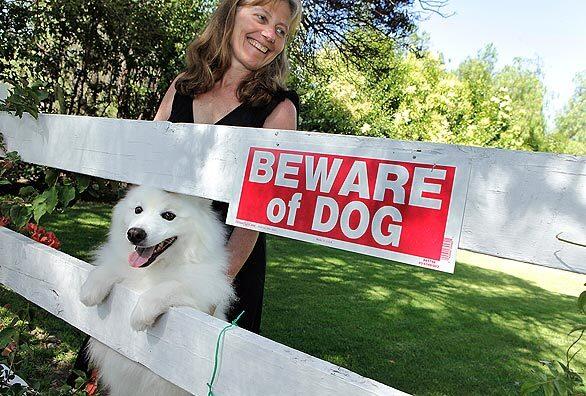
Diane Krieger has a beloved, 6-year-old American Eskimo dog name Cotton. The problem: Cotton is a biter -- or as Krieger’s husband, a lawyer, reminds her: a lawsuit waiting to happen. When solution after solution failed and options grew fewer, as an alternative to euthanizing the dog, Krieger decided on a dental procedure: A doctor would cut away 4 millimeters of Cotton’s sharp canines using a laser and then use human-grade composite to give the teeth a smooth, blunt finish.
Disarmed of his main weapons, Cotton would become more submissive -- theoretically. The Times followed along as Cotton underwent the procedure.
Back to L.A. at Home. (Brian Vander Brug / Los Angeles Times)
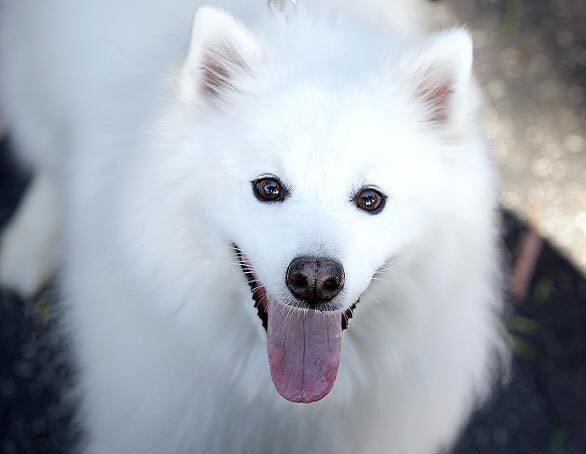
How had the 35-pound bouncing ball of fluff become a public menace? Krieger says it wasn’t apathy on her part. She enrolled Cotton in puppy classes and basic training at the neighborhood PetSmart. She bought a library of self-help books and videos. She sprung for a pricey dog-aggression expert, who ordered desensitization drills, a low-protein diet and a doggie herbal remedy akin to St. Johns Wort. Nothing worked. (Brian Vander Brug / Los Angeles Times)
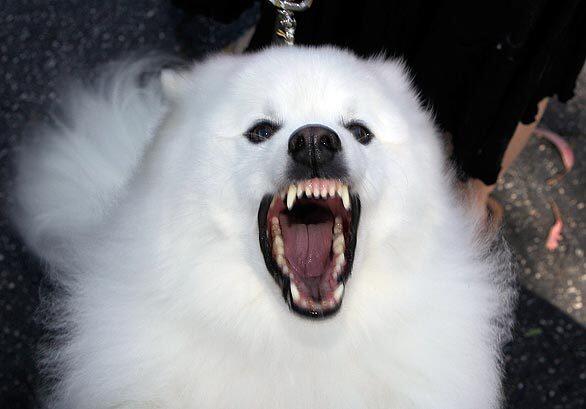
Krieger tried various strategies deployed by dog trainers: the clicker, high-pitched electronic tones, pepper spray, empty soda cans filled with rocks. She considered an electric shock collar but worried that in the hands of an amateur, it might do more harm than good. Reluctantly, she looked into dog rescue groups, but most wouldn’t take a dog with a history of biting. When a Times staffer came to take pictures of Cotton, the dog broke free from its leash and bit the photographer.
Back to L.A. at Home. (Brian Vander Brug / Los Angeles Times)
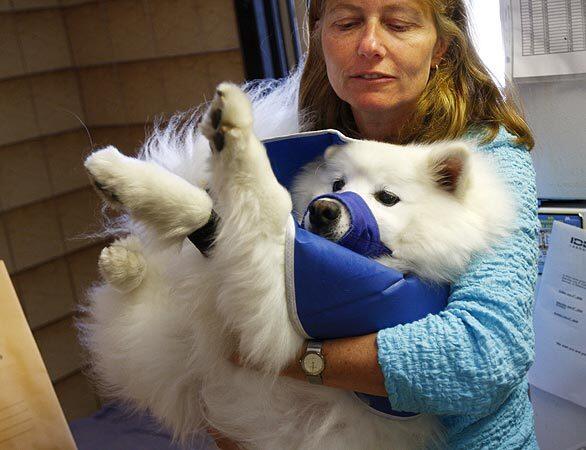
Krieger looked into defanging Cotton, but she learned that the practice is unsafe and impractical. To extract a dogs mighty canines would likely lead to a fractured jaw. Even with the canines out of the way, pointy incisors would be primed to fill the gap. Then Krieger heard about Dr. David Nielsen, a veterinary dentist based in Manhattan Beach who practiced a form of canine disarming. Here, Krieger brings Cotton to Nielsen’s facility last month.
Back to L.A. at Home. (Jake Stevens / Los Angeles Times)
Advertisement
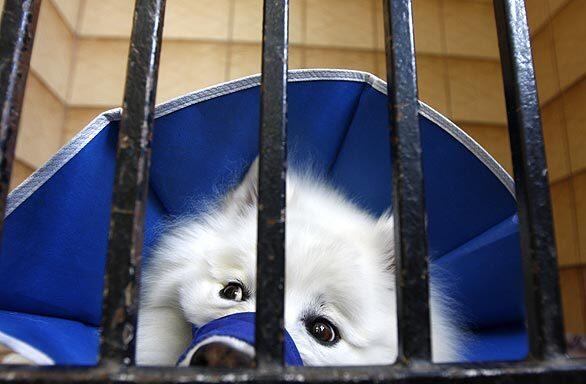
Cotton waits in a holding cage before his dental procedure. The American Veterinary Medical Assn. says it’s opposed to tooth removal or disarming of dogs because the procedures don’t address the underlying cause of aggression and may lead owners into a false confidence. The American Veterinary Dental College says disarming is controversial, but in a position statement adopted in 2005, it endorses the procedure in selected cases. (Jake Stevens / Los Angeles Times)
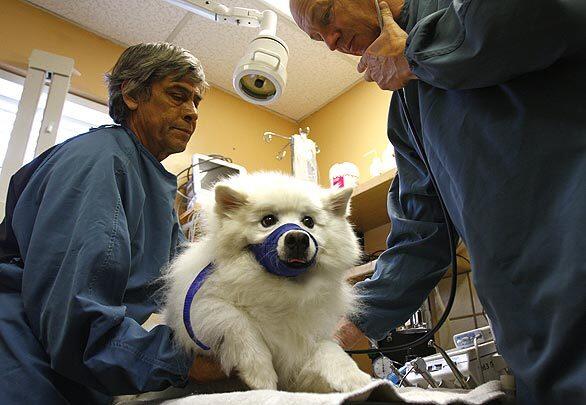
Dental technician Jose Dominguez, left, and Dr. David Nielsen place Cotton onto a table in preparation for disarming. Despite the debate over the procedure, Krieger felt like she had tried everything else to change Cottons behavior. The veterinary dentist seemed like a way to keep a beloved pet from a sadder fate.
Back to L.A. at Home. (Jake Stevens / Los Angeles Times)
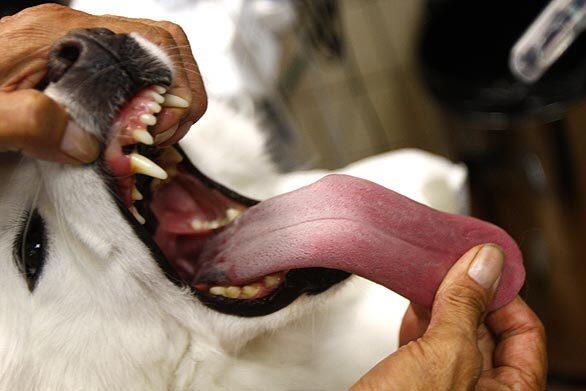
Cotton gets prepped for disarming.
Back to L.A. at Home. (Jake Stevens / Los Angeles Times)
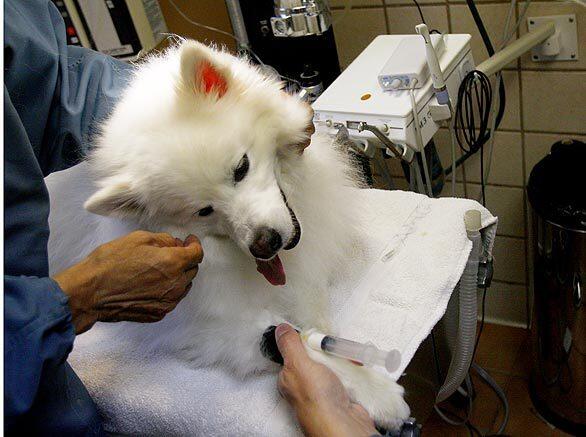
The day ahead: Cotton would be sedated before full intubation under general anesthesia. He would receive an IV drip of fluid potassium, and technicians would hook him up to a battery of machines monitoring his oxygen level, heart rate and blood pressure. The doctor would consult digital X-rays taken just before the procedure and track his progress with more X-rays. Cotton would get deep scaling before the procedure and a foamy fluoride treatment after. And he would come home with enough antibiotics and pain relievers to last a week.
Back to L.A. at Home. (Jake Stevens / Los Angeles Times)
Advertisement
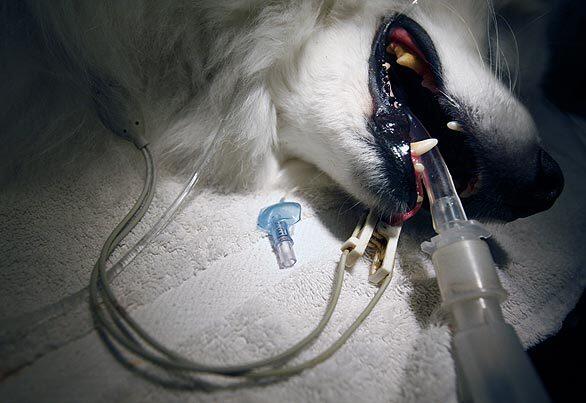
Cotton is sedated. The cost for all this treatment: : $1,600.
Back to L.A. at Home. (Jake Stevens / Los Angeles Times)
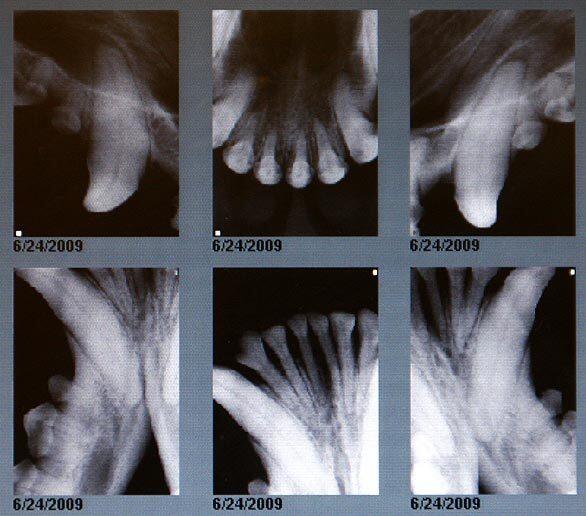
X-rays of Cotton’s teeth appear on a computer as Nielsen works.
Back to L.A. at Home. (Jake Stevens / Los Angeles Times)
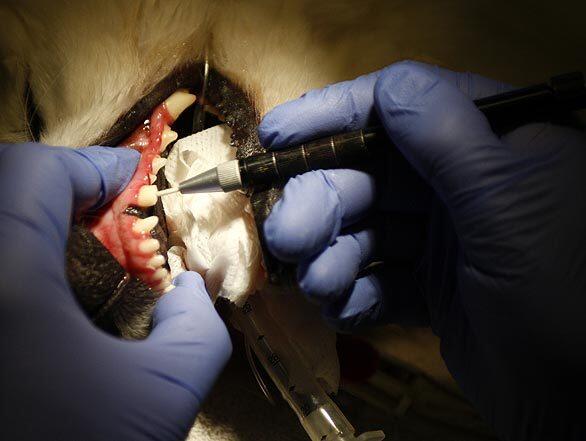
Nielsen works on one of Cotton’s teeth. After he cuts away the sharp point, he acid-etches the live pulp within the tooth and fashions a bell-shaped cavity that he packs with two kinds of human-grade composite. (Jake Stevens / Los Angeles Times)
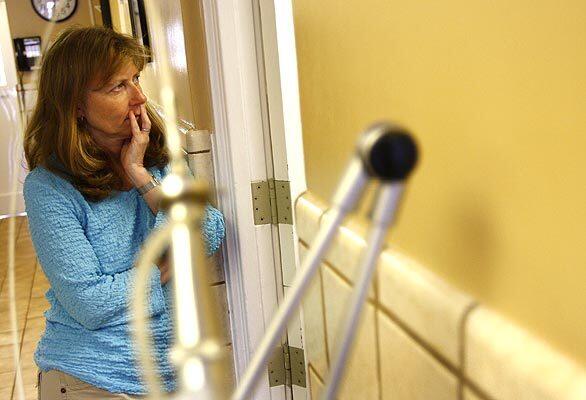
Diane Krieger watches and waits. She talked with other dog owners who were pleased with the results of the disarming procedure. One woman from South Dakota had brought her long-haired German shepherd to Manhattan Beach for the procedure in March. The owner said disarming hadnt changed the dog totally, but it had made the animal less dangerous.
Back to L.A. at Home. (Jake Stevens / Los Angeles Times)
Advertisement
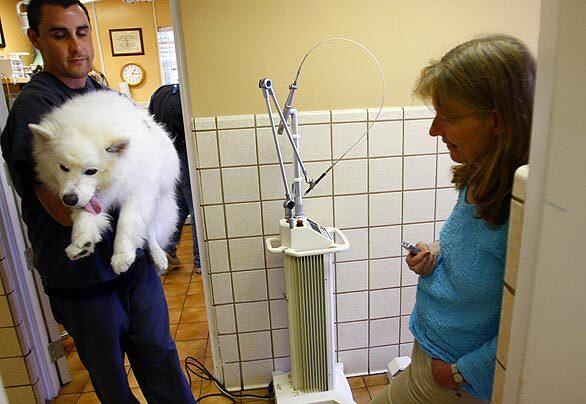
It’s done: Robert Quatteeaum carries Cotton past owner Diane Krieger.
Back to L.A. at Home. (Jake Stevens / Los Angeles Times)
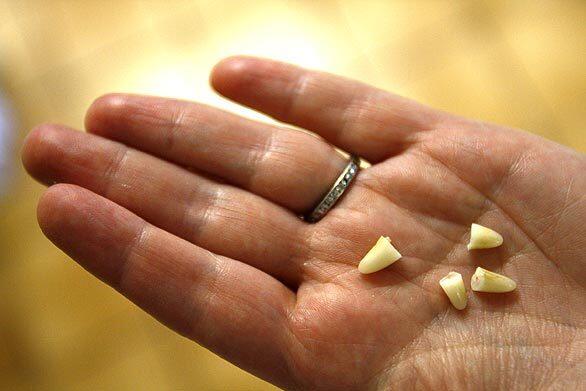
Krieger holds the tips of Cotton’s teeth.
Back to L.A. at Home. (Jake Stevens / Los Angeles Times)
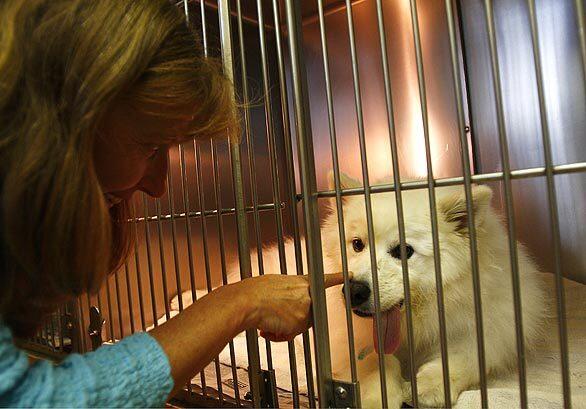
Krieger tries to console Cotton after the procedure. And what has happened since then? Krieger says Cotton still pounces at any man who ventures onto her property. The family’s gardener, Guadalupe Davila, obligingly offered his booted foot for Cottons delectation. After 30 seconds of ferocious gnawing, Cotton had only succeeded in lightly scoring the thick leather. Whether or not he learns from such experiences has yet to be determined.
Back to L.A. at Home. (Jake Stevens / Los Angeles Times)



